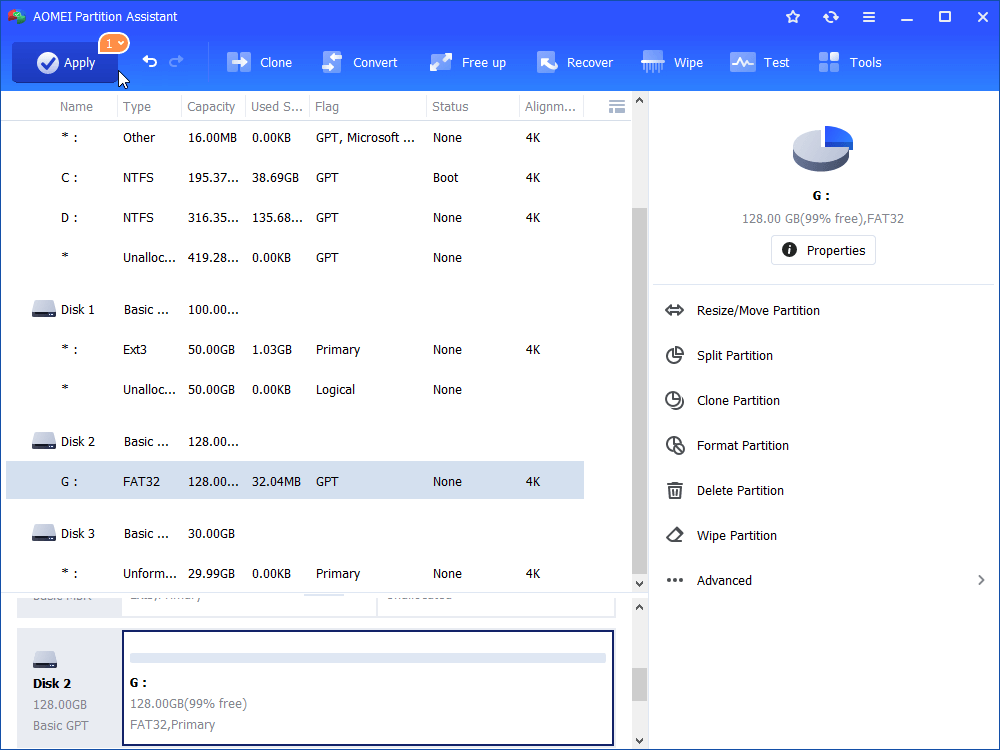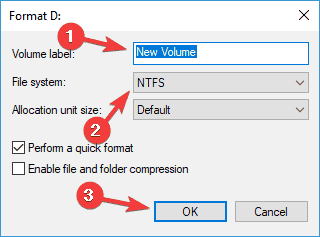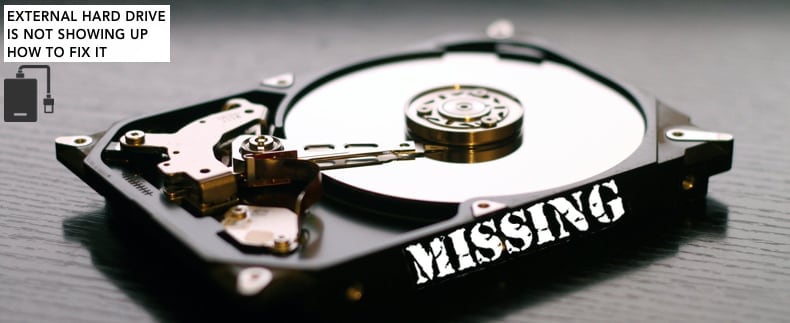
- Cannot find external hard drive windows 10 how to#
- Cannot find external hard drive windows 10 driver#
- Cannot find external hard drive windows 10 windows 10#
- Cannot find external hard drive windows 10 Offline#
- Cannot find external hard drive windows 10 windows#
Once you complete the steps, the hard drive will be imported, and the data will be accessible from File Explorer or any other application. Under the "Disk groups" section, select the Foreign disk group (1 of 1 disks) item. Right-click the disk with the "Dynamic" label and select the Import Foreign Disks option. To import a hard drive with a dynamic configuration to make it accessible through File Explorer, use these steps: This process should grant you access to the data without destroying it, but it's still recommended to create a backup of the data before proceeding. If the drive you are trying to access was configured as a dynamic disk on another computer, it will appear as a foreign drive on a different device, and you will need to import it using the Disk Management tool. Once you complete the steps, this action will erase everything on the drive and prepare it to be formatted if the storage was never initialized. Select the GPT (GUID Partition Table) option.
Cannot find external hard drive windows 10 windows#
To initialize a hard drive on Windows 10, use these steps:
Cannot find external hard drive windows 10 Offline#
If the drive was offline but never configured, continue with the steps below.

Right-click the disk with the "Offline label" and select the Online option.Īfter you complete the steps, if the hard drive was offline and previously configured, it should appear in File Explorer.
Cannot find external hard drive windows 10 how to#
How to fix missing hard drive in File Explorer using Disk Management

Right-click the hard drive in question and select the Properties option.Īfter you complete the steps, the hard drive and data should be accessible on the computer. Search for Device Manager and click the top result to open the app.To enable a hard drive using Device Manager, use these steps: If this is the case, you can enable it quickly using Device Manager. In the rare case that the storage does not appear in Disk Management and File Explorer, it could mean that the hard drive seems to be disabled. How to fix missing hard drive in File Explorer using Device Manager Once you determine that it is not a physical problem, then you can use the following recommendations to fix the most common problem prevent File Explorer from showing a hard drive. Since the motherboard firmware is different per-manufacturer and even per-device model, make sure to check the manufacturer support website for more specific instructions. Access the computer Basic Input Output System (BIOS) or Unified Extensible Firmware Interface (UEFI), and make sure the firmware is detecting the storage.Connect the drive to another computer to determine the problem is not the device.When checking the internal components, make sure to power off and unplug the computer before beginning the process. If it is an internal hard drive, make sure the data and power cables are correctly connected to the storage device, motherboard, and power supply.If you are using a USB hub, try to connect the drive directly to the computer. If it is an external USB hard drive, disconnect it and try a different USB port.Confirm the hard drive is correctly connected to the computer and receiving power.On Windows 10, if a traditional mechanical hard drive (HDD) or solid-state drive (SSD) does not appear in File Explorer, there are many reasons why this is happening, but before checking and modifying the system settings, try these troubleshooting steps: How to fix missing hard drive in File Explorer using physical troubleshooting How to fix missing hard drive in File Explorer using diskpart.
Cannot find external hard drive windows 10 driver#
Cannot find external hard drive windows 10 windows 10#
In this Windows 10 guide, we will walk you through several ways to troubleshoot a hard drive that refuses to show up in File Explorer.

Whatever the reason it might be, Windows 10 includes multiple ways to fix the issue and regain access to the drive using Device Manager, Disk Management, and command-line tools like diskpart.


 0 kommentar(er)
0 kommentar(er)
